Coursera’s Monetization Journey: From Zero to IPO
Coursera used to be completely free. Now they make $400+ million a year. Here is how they did it.
Note: This article has been extended to cover Coursera’s evolution up to 2021. It was first published in June 2019.
| Revenue | 2017 | 2018 | 2019 | 2020 | 2021 (till Q3) |
| Total | $95.6m | $141.8m | $184.4m | $293.5m | $300.3m |
| Consumer | $85.7m | $107.5m | $121m | $193m | $180.4m |
| Enterprise | $7.4m | $26.0m | $48.2m | $70.8m | $84.5m |
| Degrees | $2.5m | $7.4m | $15.1m | $29.9m | $35.4m |
| Net Loss | ($53.3m) | ($43.6m) | ($46.8m) | ($66.8m) | ($97.6m) |
Early this year, Coursera went public on NYSE, raising $519 million. In total, the company has raised ~$1 billion.
As you may recall, MOOCs were born without a business model. Initially, everyone wondered how free courses would ever make money. Last year, Coursera made around $293.5 million.
Through Class Central, I’ve been tracking and writing about the evolution of the MOOC space from its very beginning. In this article, I explain how Coursera evolved over the last decade from a startup with no revenue stream to a public company that will make over $400 million in 2021.
In a previous article, I dove into Coursera’s business by analyzing its IPO prospectus.
This article is based on the keynote I gave at the 9th TCU International e-Learning Conference in 2018 in Thailand, titled A Product at Every Price: Overview of MOOC Monetization Models. It’s been updated to reflect the latest developments at Coursera.
History of Coursera Monetization
Jan 2012: Free Online Education
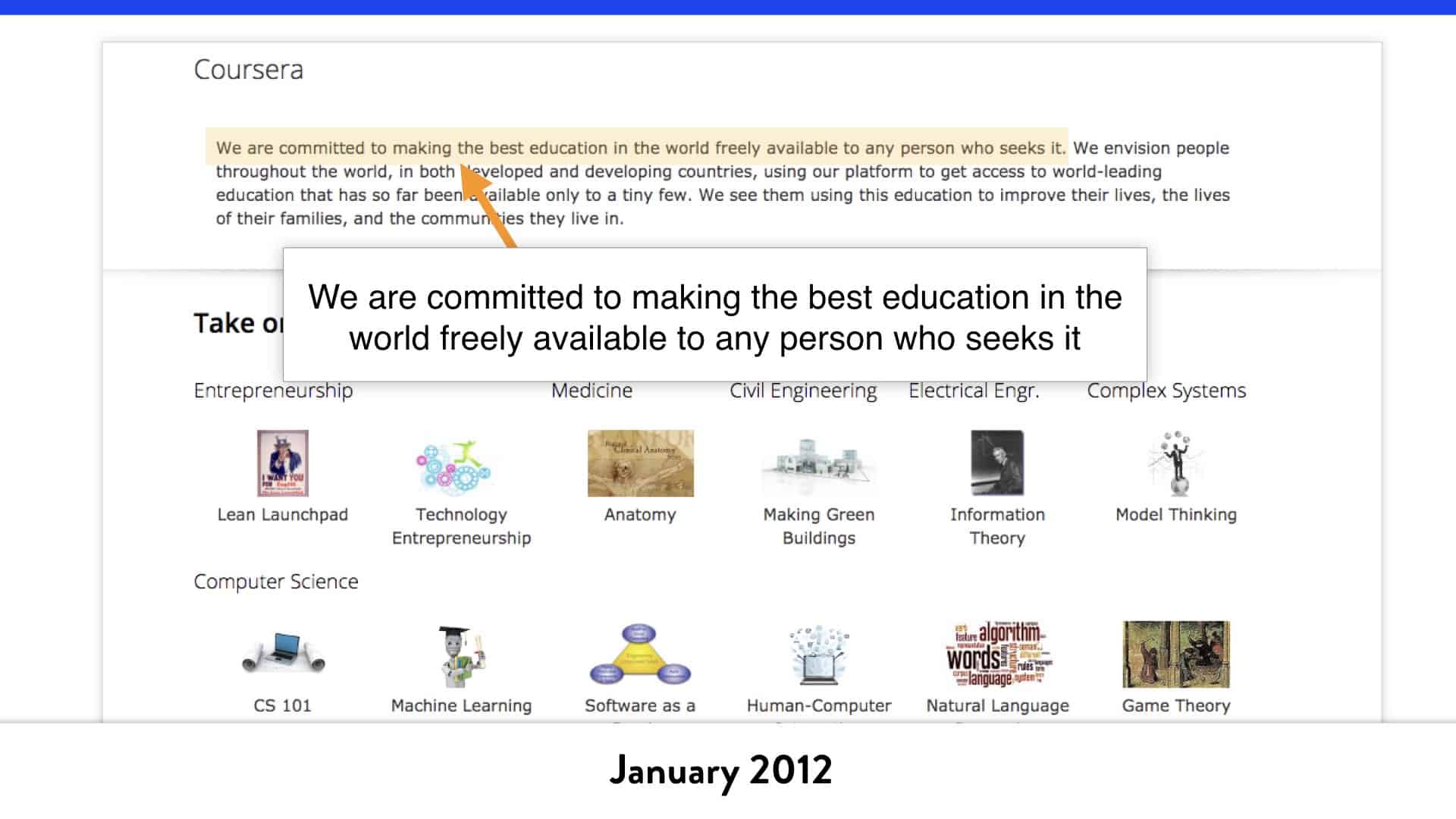
Coursera formally launched in Jan 2012 with the mission statement: ”We are committed to making the best education in the world freely available to any person who seeks it.” At that time Coursera had no business model.
In July of that year, The Chronicle of Higher Education obtained the agreement governing Coursera’s relationship with one of its partners, the University of Michigan at Ann Arbor, under a Freedom of Information Act request. The agreement contained a section that listed eight possible business models, basically making the university aware of the ways Coursera might eventually try to make money from courses. The business models included: certification, secure assessments, employee recruiting, employee or university screening, human-provided tutoring or manual grading, corporate/university enterprise model, sponsorships, and tuition fees. The agreement also showed that Coursera would share with universities 6-15% of the total revenue and 20% of gross profits on its courses.
Dec 2012: First Attempt at Monetization – Headhunting
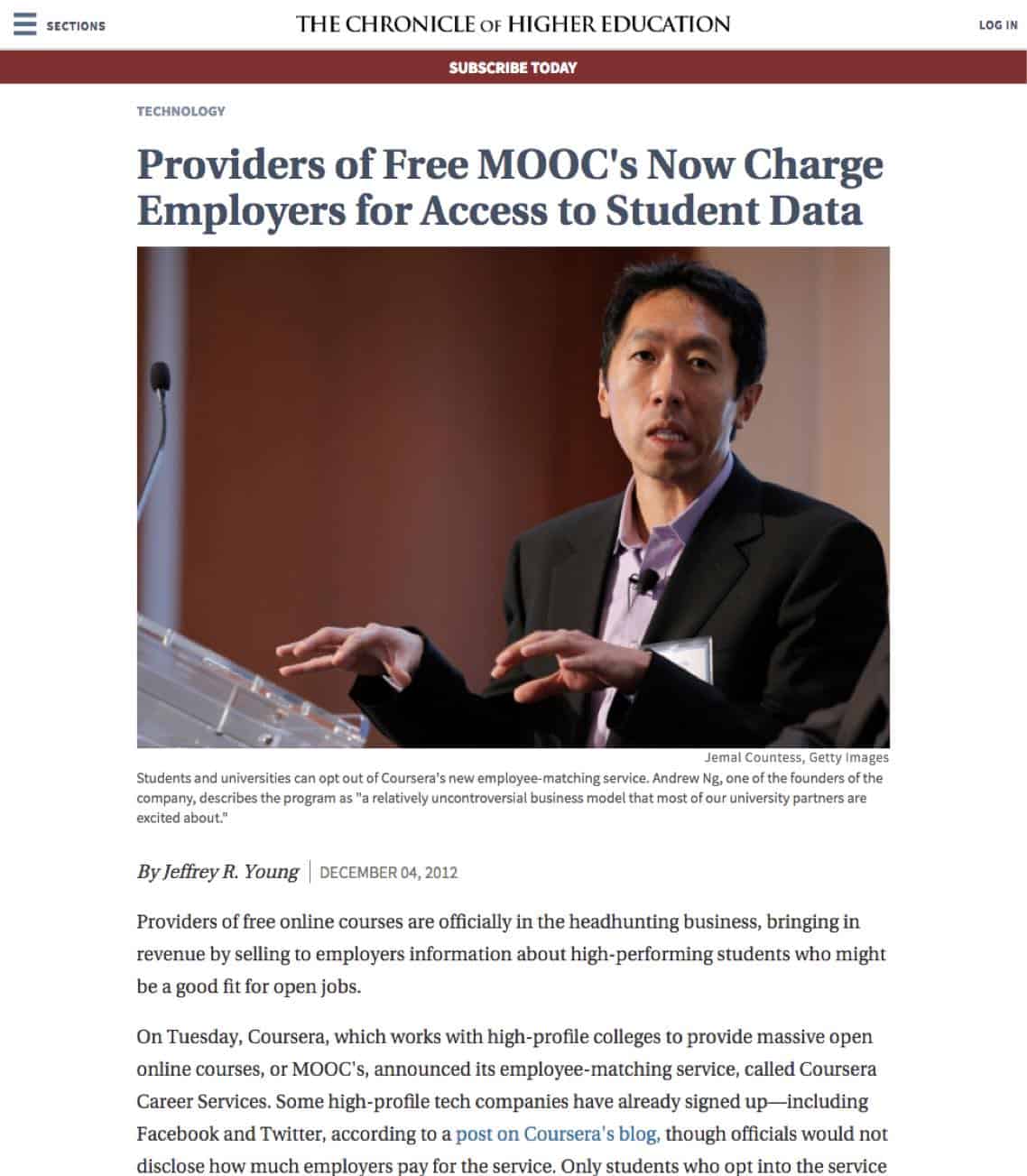
In December 2012, When Coursera had around 2 million registered students, the company published a blog post (the post seems to have been deleted from the blog), pitching Career Services as “a recruiting service that connects passionate and committed Coursera students with positions that match their skills and interests.” The service used sophisticated analytics to match students to companies. Students had to explicitly opt in and create a profile to be eligible.
Coursera charged companies a flat fee for introductions to matched students. The revenue would be shared with the university whose courses the student had registered for. At launch, positions were all in software engineering. Some of the initial companies using the service included Facebook, Twitter, AppDirect, and TrialPay.
At some point, Coursera quietly shut down Career Services.
Jan 2013: Verified Certificates Launched
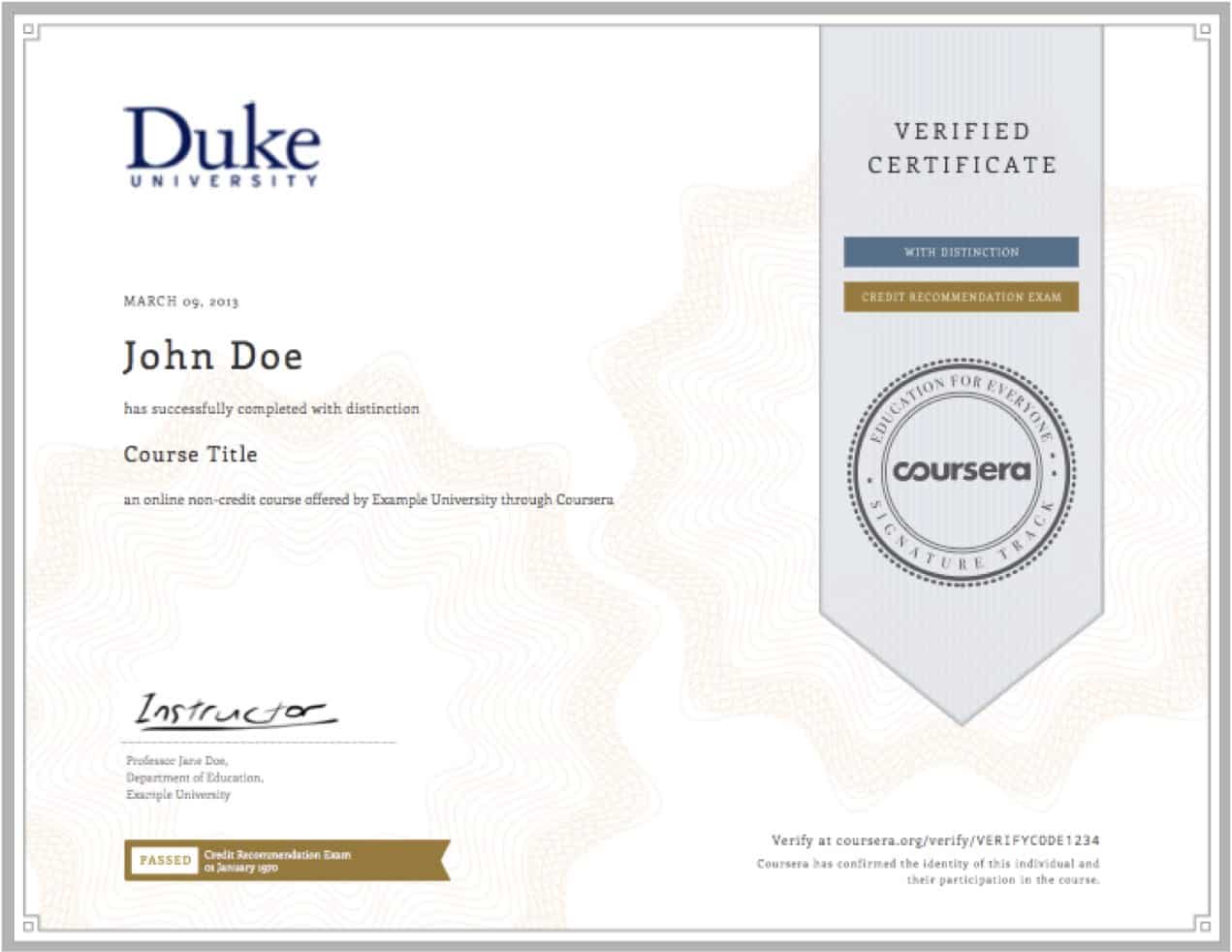
Just a month after its experiment with Career Services, Coursera announced the Signature Track, in January 2013. Signature Track “securely links coursework to real identity” via a verified certificate, which costs between $30 and $100. At launch, six courses were eligible for the verified track. Students facing economic hardship could apply for financial aid.
September 2013: $1 Million in Revenues
Nine months after the launch, Coursera cracked $1 million in revenue through the sale of 25,000 sales of verified certificates among its 4.7 million students. Five months later, cumulative revenues reportedly reached $4 million.
It may well be that a small set of popular courses contributed to the bulk of these revenues. In an April 2014 interview with Class Central, Professor David Bell of the University of Pennsylvania Wharton School of Business mentioned that 10,000 people had signed up for Signature Track in his Introduction to Marketing course, part of the Wharton Foundation Series. At $49 per verified certificate for the course, that one course had earned nearly half a million dollars in revenue in a little over a year.
January 2014: Coursera Announces Specializations
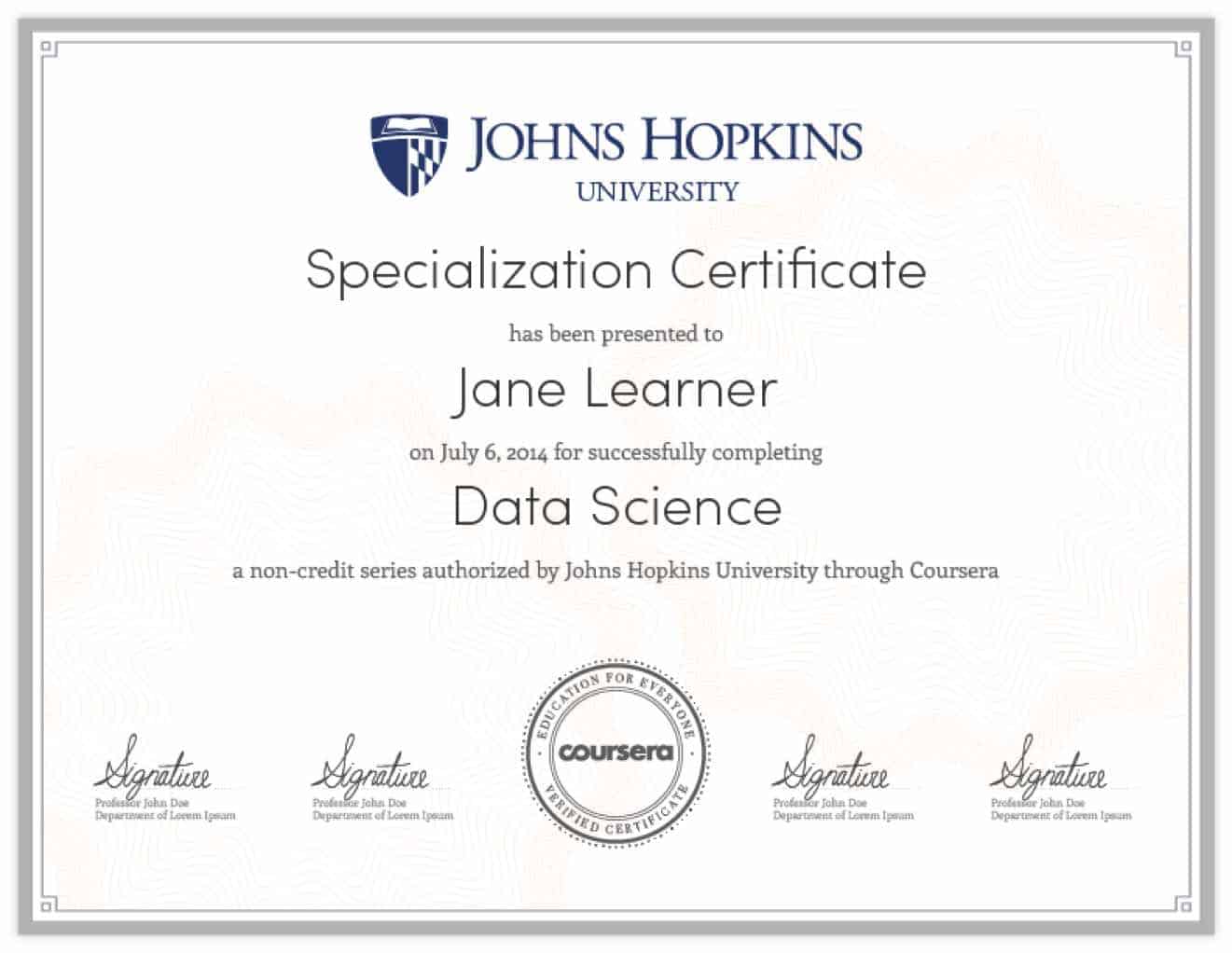
In January 2014, Coursera announced Specializations, which consist of a group of related courses designed to help students deepen expertise in a subject. To obtain a Specialization certification, a student has to earn a verified certificate in each of the courses that make up that Specialization. Specializations quickly took off.
October 2014: $1 Million in Monthly Revenue
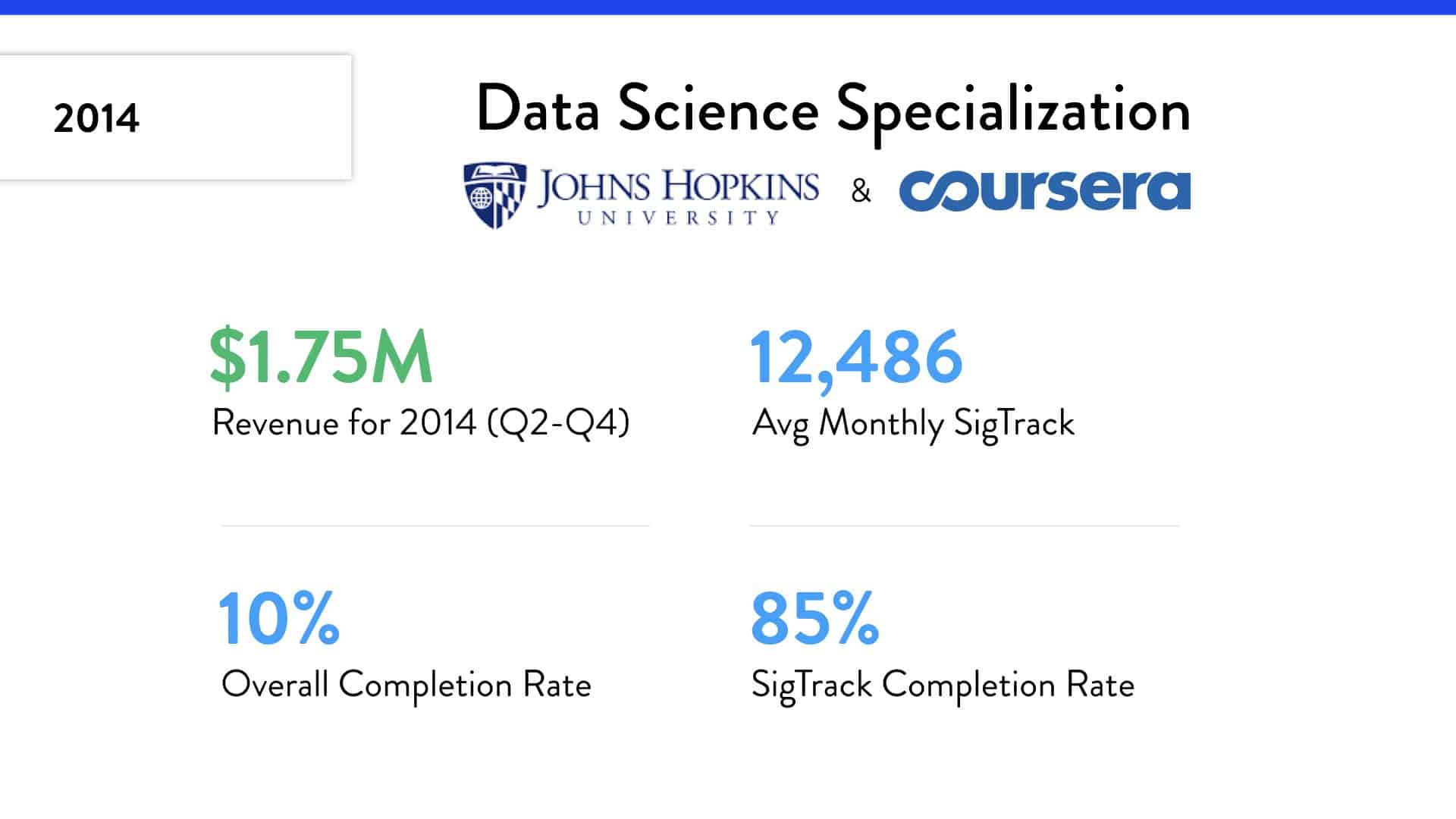
In October 2014, Coursera reached $1 million per month in revenues, likely fuelled by the popularity of Specializations. Johns Hopkins University shared details about their Data Science Specialization, consisting of nine courses and a capstone project. In the first five months after the Specialization started, 14,000 people completed at least one course with a verified certificate (each cost $49) while 266 students completed all 9 classes. These figures, not accounting for any financial aid given, amount to about $1 million in verified certificates. It may be that some people would have purchased these verified certificates even without the larger Specialization, but it is safe to assume that the Specializations were (and continue to be) a big driver of sales of verified certificates.
November 2014: End of Free Certificates
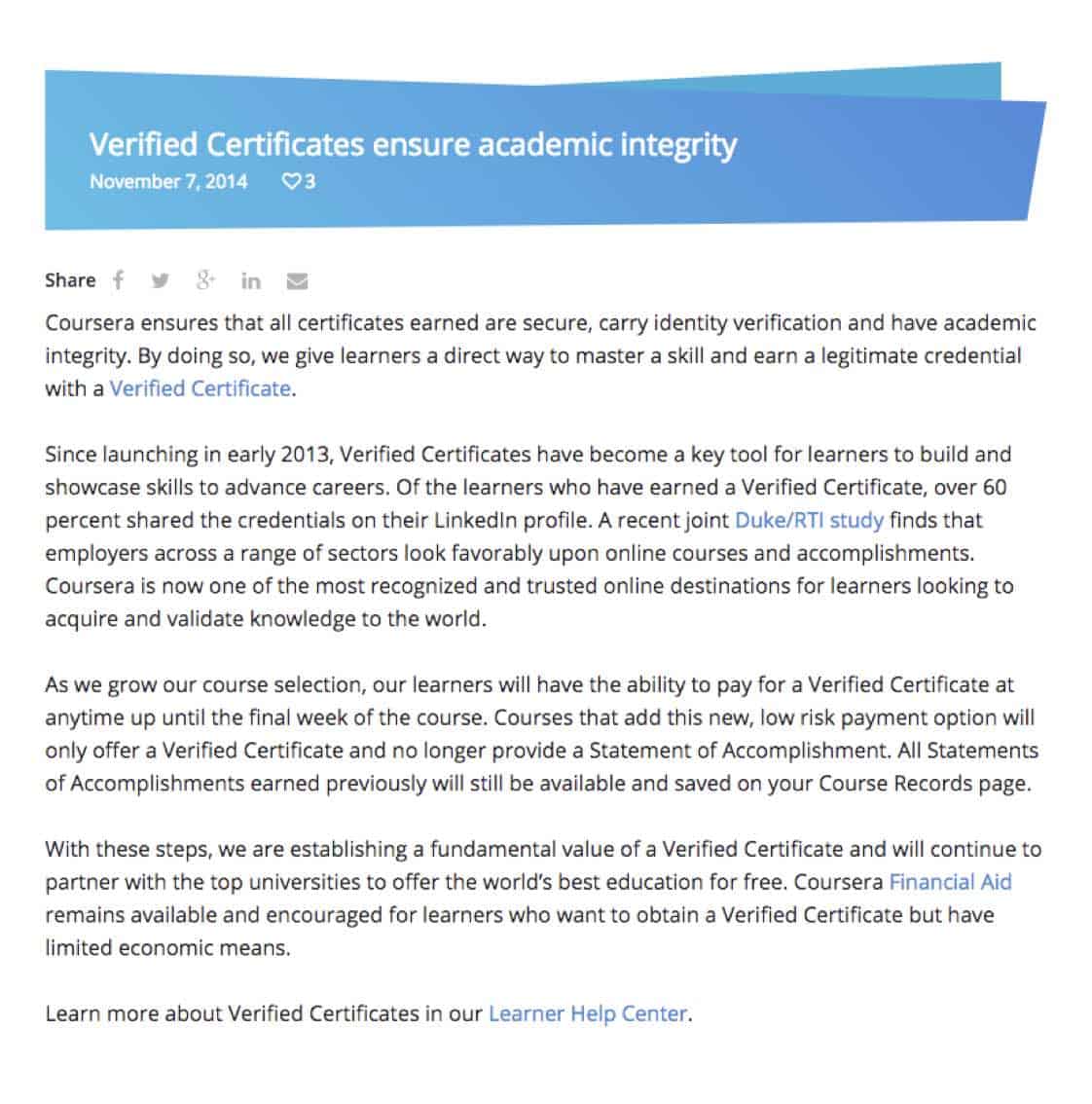
In November 2014, much to the disappointment of some users, Coursera stopped offering free certificates (known as Statements of Accomplishment). This was the first sign that Coursera might move away from its mission statement and that MOOCs might not remain free.
Late 2014: On-Demand Platform is Launched
In late 2014, Coursera started rebuilding its technology platform to support completely self-paced courses. Initially only a few courses were available, and none of these courses offered free certificates. In fact, the new platform didn’t even include a way for a course to offer a free certificate. Soon, Coursera would start pushing all new courses to this new platform.
Now, instead of courses being available only once or twice a year, users could start a course any time under a self-paced model. This meant that Coursera could now earn money from a course throughout the year. Coursera eventually settled on a flexible session-based model, in which new sessions start on a regular schedule, at a bi-weekly or monthly frequency.
Mid 2015: Coursera Solicits Bids from Universities
Up to this point universities decided which courses to make and launch. In the middle of 2015, Coursera decided to take control of its destiny. The company made a list of Specializations that they thought would sell well and asked universities to bid to create them. The winning bids would be given an advance of $100,000, which would be paid back with revenues from the course.
May 2015: iMBA Announced
In May 2015, Coursera announced its first degree partnership, with the University of Illinois at Urbana-Champaign. The iMBA was expected to cost around $20,000, less than half the cost of most other online and on-campus MBA programs.
October 2015: Assignment Paywall
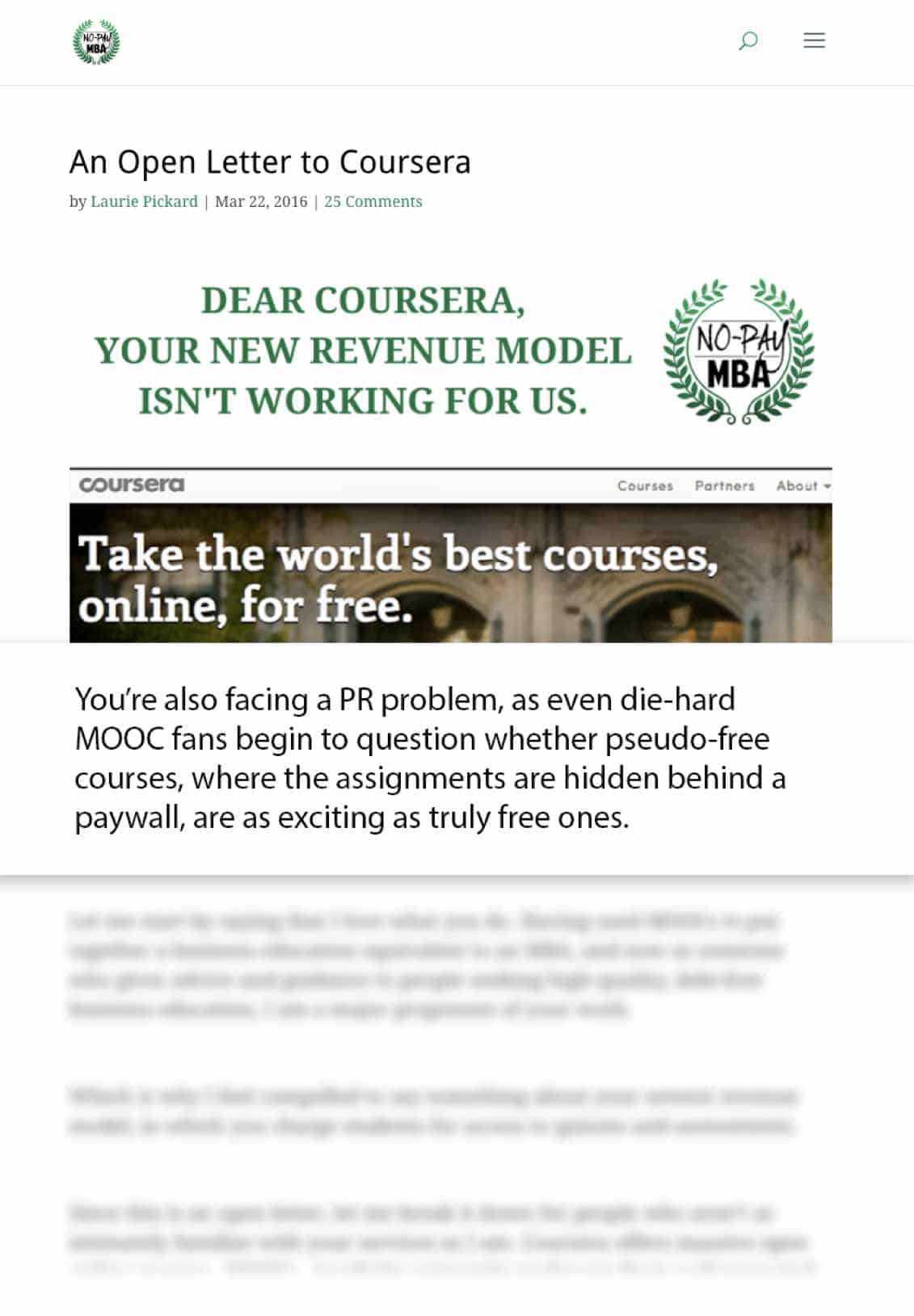
In October 2015, Coursera announced that they would put assignments and homework behind a paywall. Now, only those people who paid for a certificate would be able to access these assignments. With this change, Coursera had effectively started charging for content.
Feb 2016: Coursera Pilots Mentor-Guided Courses
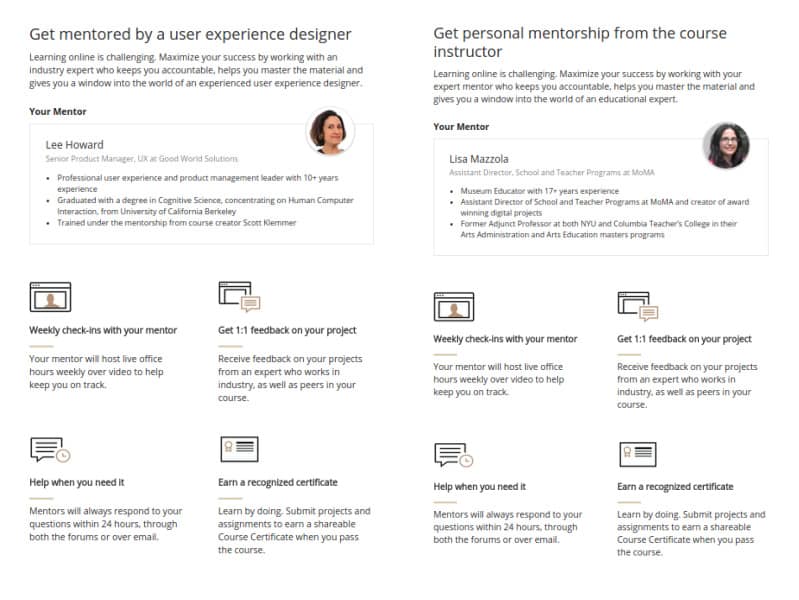
In Feb 2016, Coursera experimented with mentor-guided courses, an initiative which allowed learners to pay extra for mentor support. Coursera charged $149 for the first mentor-guided courses (a 40% discount from the list price of $248). Students who signed up for a mentor guided course were promised 1:1 project feedback, email/forum support, and access to live weekly office hours. Ten courses were chosen for the pilot with 50 slots for mentees. The pilot was discontinued shortly after its launch.
June 2016: Coursera Shuts Down Old Platform, Moves to On-Demand Model
Eventually, Coursera shut down their old platform and forced everyone to move to the new on-demand model. In this process, hundreds of Coursera courses were lost forever.
June 2016: Coursera Pilots Paid Only Courses
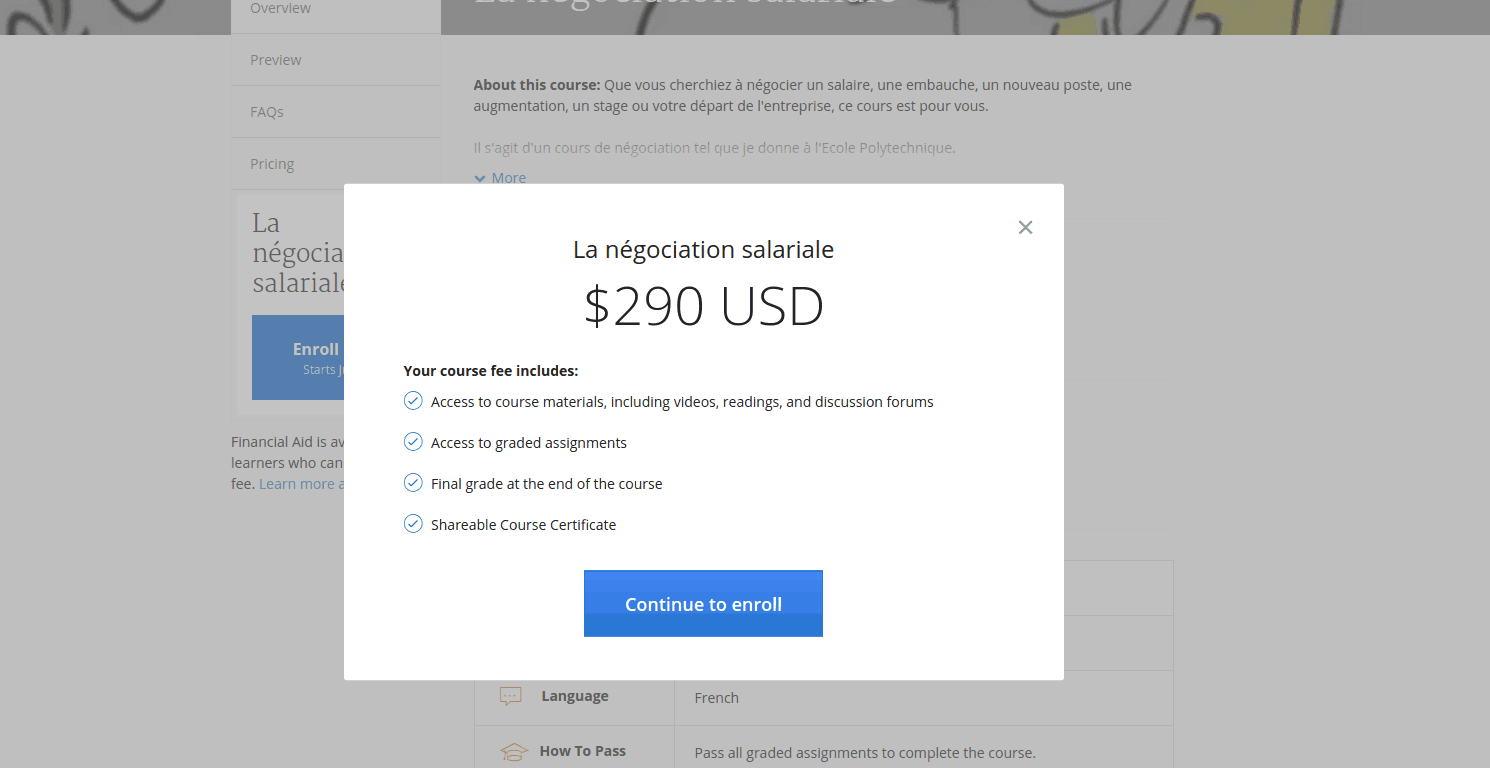
In June 2016, Coursera began offering a few courses that were only open to paying users. A few courses which had been free were now paid. This pilot apparently failed; Coursera didn’t continue, and the courses went back to being free (or rather, ‘free to audit’). Despite the reversal on the first paid courses, fully paid courses have now become more numerous on Coursera.
August 2016: Coursera for Business
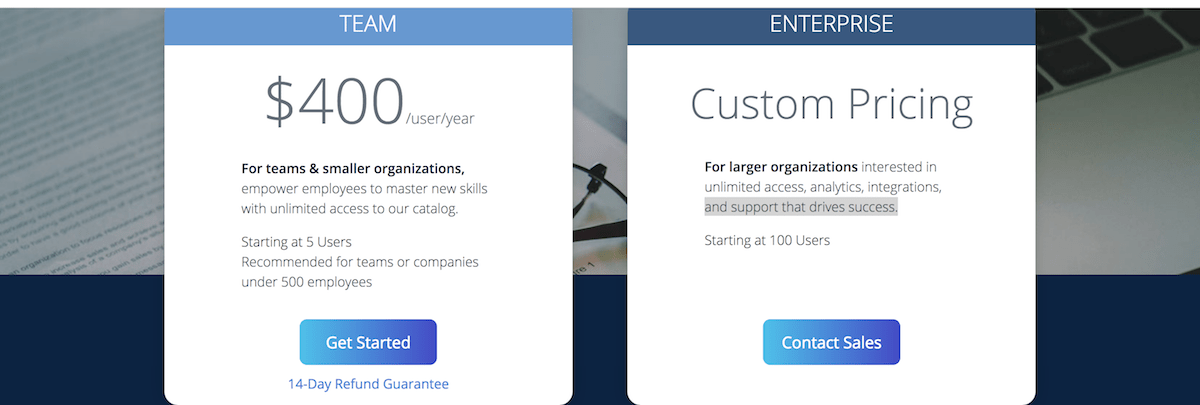
In August 2016, Coursera launched Coursera for Business. Now, businesses could purchase Coursera content for their employees.
October 2016: Subscriptions for Specializations
Then in October, Coursera changed the pricing of Specializations. Previously, learners bought the Specialization course by course and paid a fixed price per course.
Under the new pricing model, users would pay a monthly fee ranging between $39–$89 to have access to graded assignments and to earn certificates. These features remained enabled as long as learners were paying the subscription fee. They could also pay a larger amount to get access to all the premium features for the entire Specialization for 12 months. (This option is no longer available.)
2016: Potential Revenue $50-60M
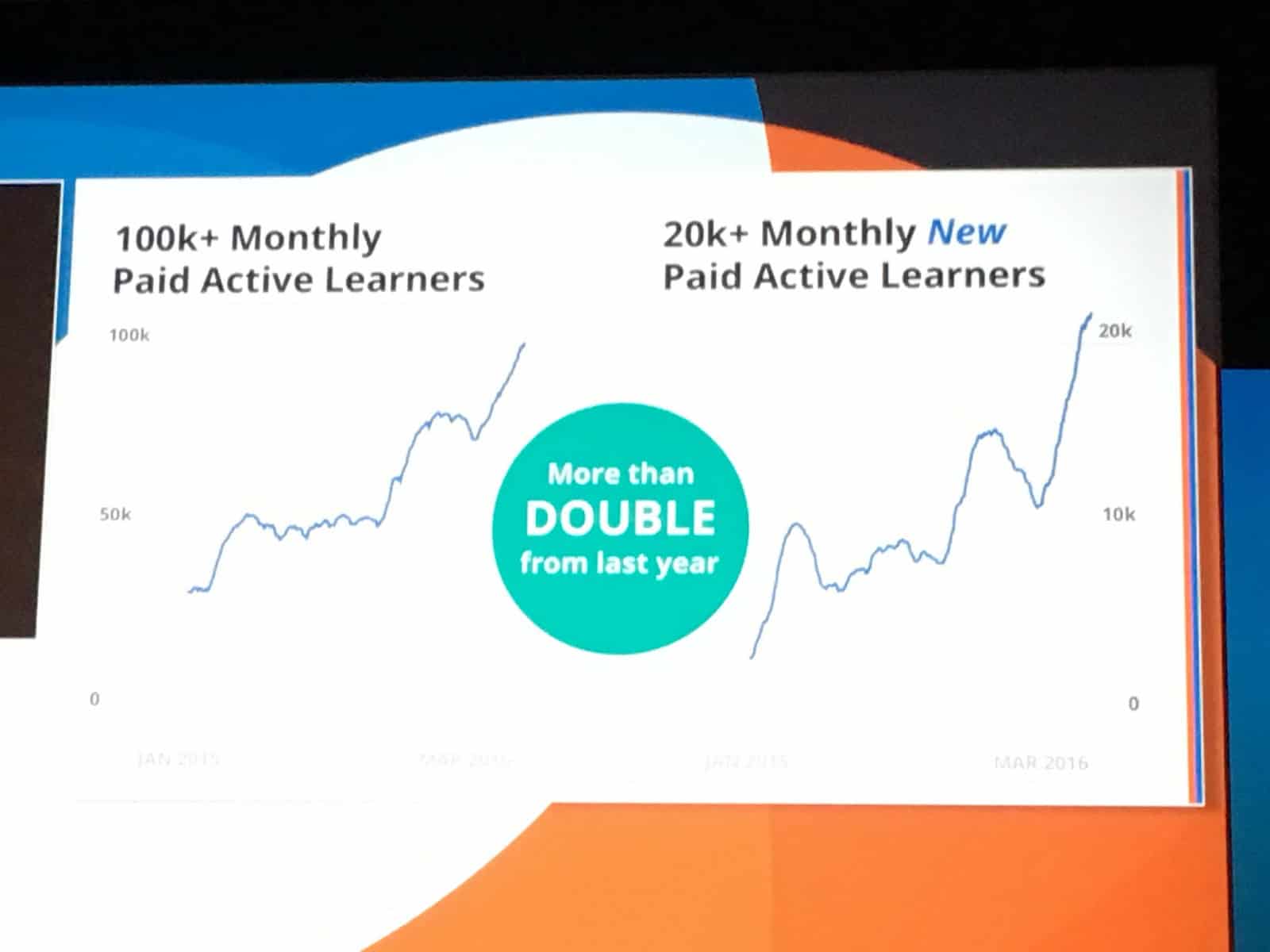
At the 2016 Coursera Partners Conference, Coursera revealed some details about how many paid learners they have. At that time, they had over 100,000 monthly paid active learners and were adding at least 20,000 more every month. Using some back of the envelope calculations, I estimated $50-$60 million in revenue.
By this point, the original MOOC model (involving free courses, large numbers of people who would take a course at the same time, and free certificates) had practically disappeared. Over the past several years, Coursera had removed free certificates, put graded assignments behind paywalls, adopted a subscription model for payment, switched to an on-demand model for course delivery, and increased the monetizable content on the platform by soliciting bids from universities.
April 2017: Coursera Launches Free Trial For Specializations
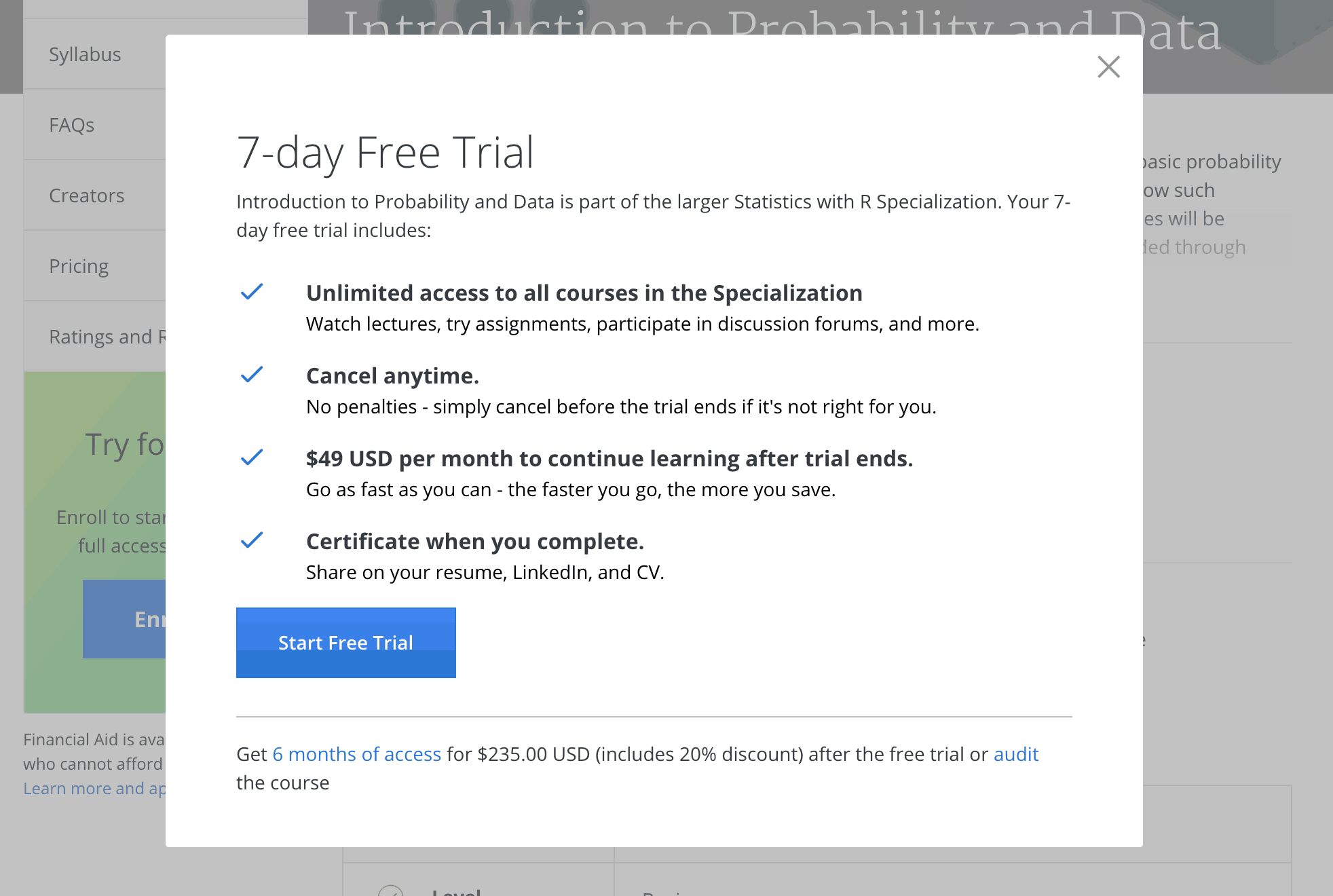
In April 2017, Coursera introduced another tweak to the model: a seven-day free trial for Specialization subscriptions. Users could now get access to premium features for free for a week, but would have to provide a credit card to start the free trial.
April 2017: Financial Aid Restrictions
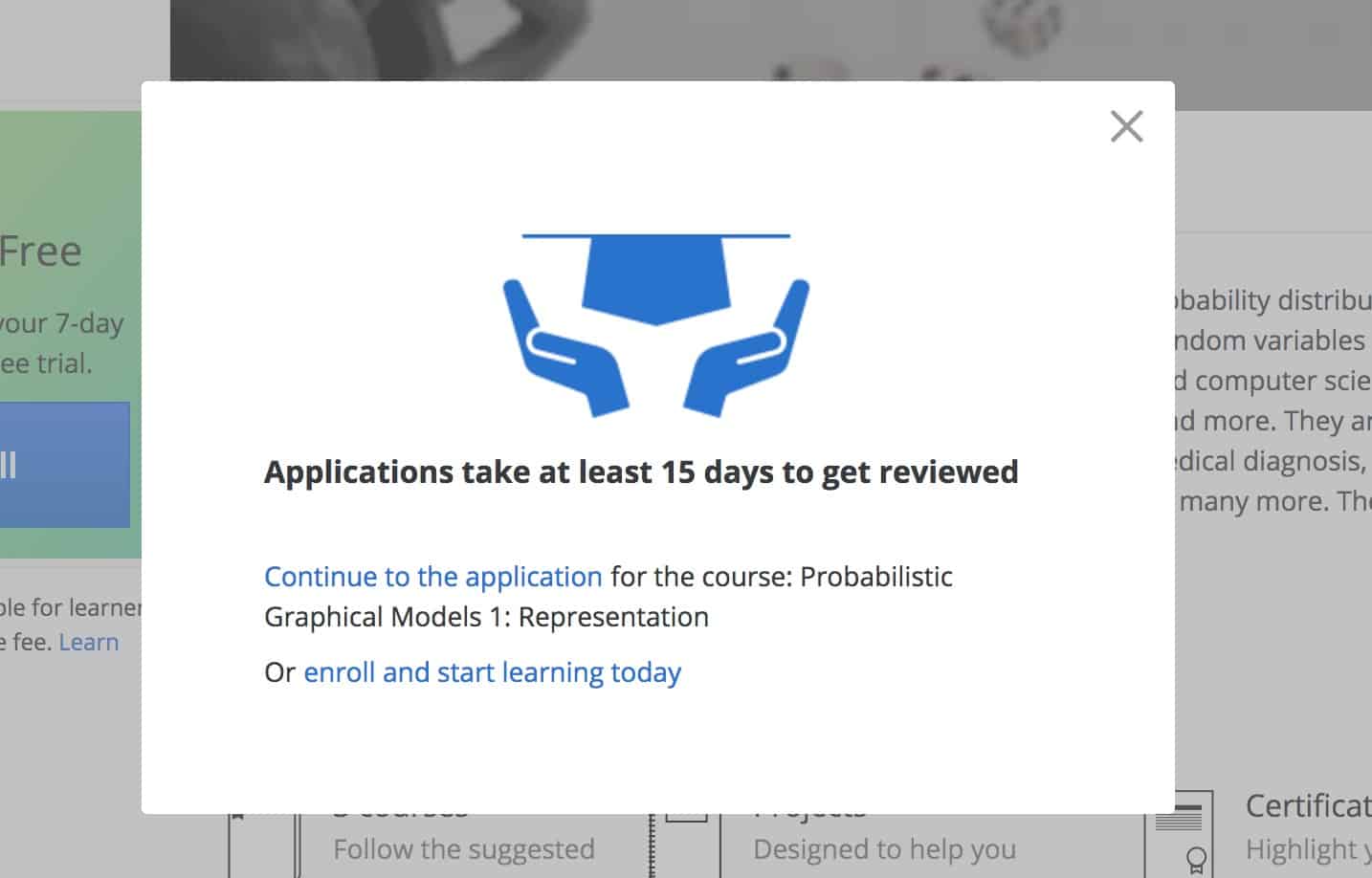
That same month, Coursera made some changes to its financial aid policies. For a long time, Coursera was pretty liberal with its financial aid and was quick to approve aid applications. I personally applied for financial aid and was approved instantly. In October 2015, Coursera announced that it had approved 1 million financial aid applications. However, Coursera changed the application process, making it longer and more difficult.
As one of Class Central’s users lamented:
“Now they want what looks like an essay — 300 words — of why you cannot pay, and there are a few boxes to tick on whether you would take out a loan (to do a course which has no transferable credit!) and if you say ‘no’ to a loan, they want an explanation from you. Then it will take 15 days to approve or decline an application.”
Mid 2017: Single Subscription Price
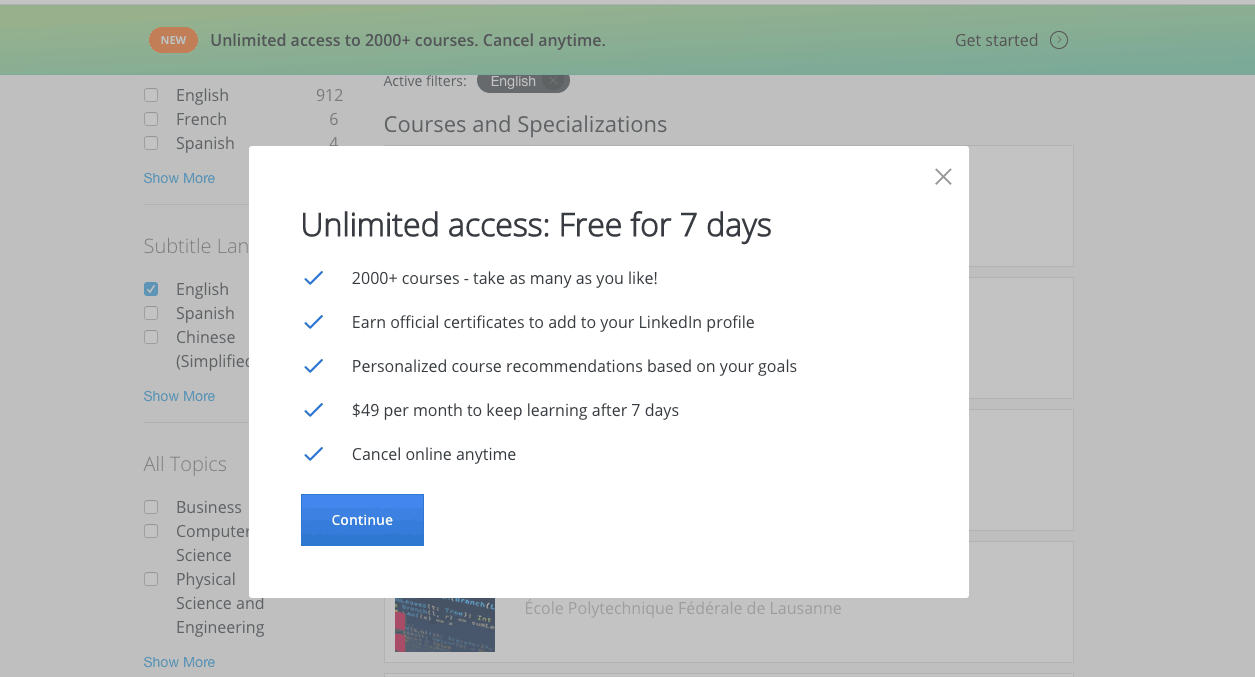
In 2017, Coursera ran an extensive test on a newer pricing model. Under this model, learners would get access to the whole catalog (instead of just one Specialization) for a price of $49/month, a huge price cut for users interested in multiple Specializations.
Previously, if you were to subscribe to every Specialization in Coursera, it would cost you thousands of dollars per month. Now you could get that access for $49/month. Unfortunately, Coursera did not move forward with this pricing model, and catalog subscriptions are no longer available to individual learners. Companies can still purchase a catalog subscription for their employees, through Coursera for Business for a price of $400/employee per year.
End of 2017: Coursera for Business Exceeds 500 Companies
In 2016, 30 companies had signed up for Coursera for Business. Coursera ended 2017 with more than 500 companies signed up for the service.
Jan 2018: $9.6 Million in Tuition from Online Degrees
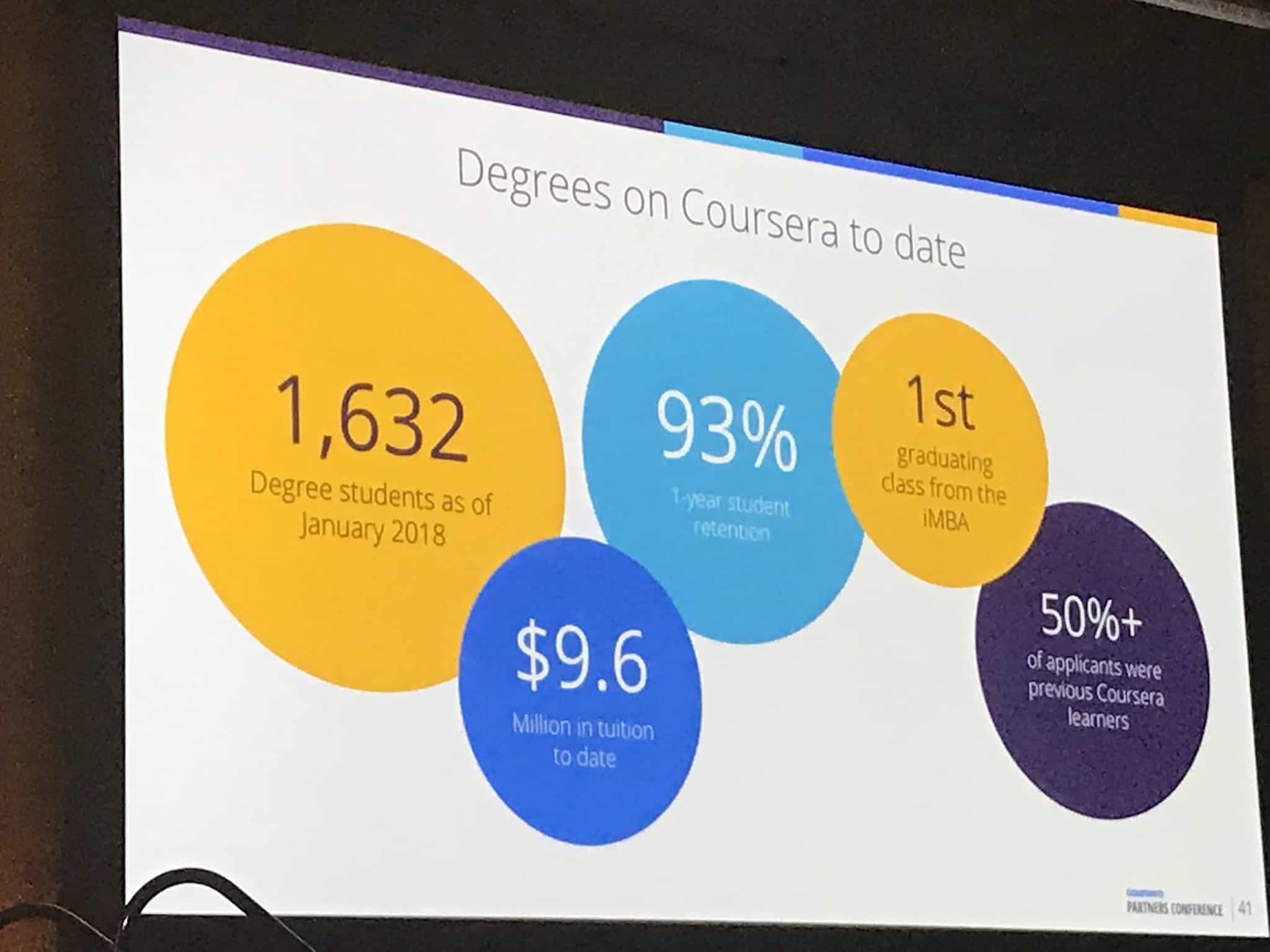
At their 2018 partners conference, Coursera announced that they had 1,632-degree students and a total of $9.6million from tuition revenue. Interestingly, Coursera noted that 50% of the degree students were previous Coursera learners.
A large portion of the costs for traditional online degrees come from the marketing cost to acquire the student. For Coursera (and this is true of other MOOC platforms too), this cost is significantly lower. The MOOC platform with tens of millions of learners acts as a marketing channel. As we will see, Coursera saw a lucrative opportunity in online degrees, and they went for it.
To learn how MOOC-based degrees are different from traditional online degrees, read Class Central’s article here.
March 2018: Coursera Launches Six New Degrees, Including a Bachelor’s Degree
In March 2018, Coursera announced six new degrees, including its first MOOC-based bachelor’s degree, a B.S. in Computer Science from Goldsmiths, University of London.
Two of the six new degrees were master’s in public health, the first non-STEM degrees announced by Coursera, from the University of Michigan and Imperial College of London. Coursera also announced two master’s of computer science, one from Arizona State University and the other from the University of Illinois. The University of Michigan announced a Master of Applied Data Science (which is similar to the Master of Computer Science in Data Science from the University of Illinois).
A sign of the increasing popularity and legitimacy of MOOC-based degrees, a few months later Coursera would announce a MOOC-based masters from an Ivy League school, The University of Pennsylvania.
To see a list of complete degrees check out Class Central’s list of 70+ legit masters degrees or our pricing chart.
March 2018: Coursera Announces MasterTrack
In addition to its Specializations, Coursera announced another micro-credential called MasterTrack, similar to edX’s MicroMasters program. Both these micro-credentials allow learners to earn credit towards a Master’s Degree. Students still need to apply and get accepted into the Master’s program to redeem the credits.
2018: Coursera’s 2018 Revenue Estimated at $140 Million
Editor’s Note: This has been confirmed by Coursera’s IPO Prospectus.
According to Forbes, Coursera’s 2018 estimated revenue is around $140 million. (In our analysis of Coursera in 2017, Class Central estimated Coursera’s 2017 revenue in the range of $100 million.)
By the end of 2018, Coursera had an active catalog of 3100 courses and 310 Specializations, 12 master’s degrees announced, and over 1,500 enterprise customers (including over 60 Fortune 500 companies), up from 500 at the end of 2016.
August 2019: $10 million Rhyme Acquisition
Coursera acquired Rhyme, a startup dedicated to creating authoring tools for hands-on online projects.
Coursera’s S-1 reveals that they purchased the company for $7.7 million — 50% in cash and 50% in stock. The company also granted the founder stock worth $1.25 million (vesting over 4 years) and $500k in joining bonus, bringing the total effective purchase price to $10 million.
Since the acquisition, Rhyme’s technology has been used in its 1000+ Guided Projects, which were heavily emphasized in the prospectus.
Sept 2019: Coursera Reintroduces Professional Certificates
Coursera renewed its emphasis on Professional Certificates. This type of microcredential promises to help learners gain in-demand skills and prepare them for specific industry roles.
Some of these certificates, especially those by Google, have been extremely popular and got plenty of media attention. At the time of writing, Coursera has 5 Professional Certifications from Google: Data Analytics, Project Management, UX Design, IT Support, and IT Automation.
Some of the professional certificates from Google and IBM are now eligible for ACE Credit.
You can read the review for the IT Support certification by Class Central’s @pat.
Oct 2019: Coursera for Campus Announced
Coursera announced Coursera for Campus, a program that gives universities access to a large subset of Coursera’s catalog. It also enables university faculty to publish private courses available only to their students and alumni.
According to the company, it was announced after extensive pilots with 20 university campuses around the world.
As you’ll see later, when the pandemic hit, Coursera for Campus played a key role in Coursera’s pandemic response.
Dec 2019: Second Attempt at a Catalog Subscription
Class Central first broke the news that Coursera was testing an annual catalog subscription, called Coursera Plus. This was officially announced in Feb 2020.
Coursera Plus would cost $399 per year, and it would give access to 90% of Coursera’s catalog and include unlimited certificates.
2019: Courses Now Start Every Day
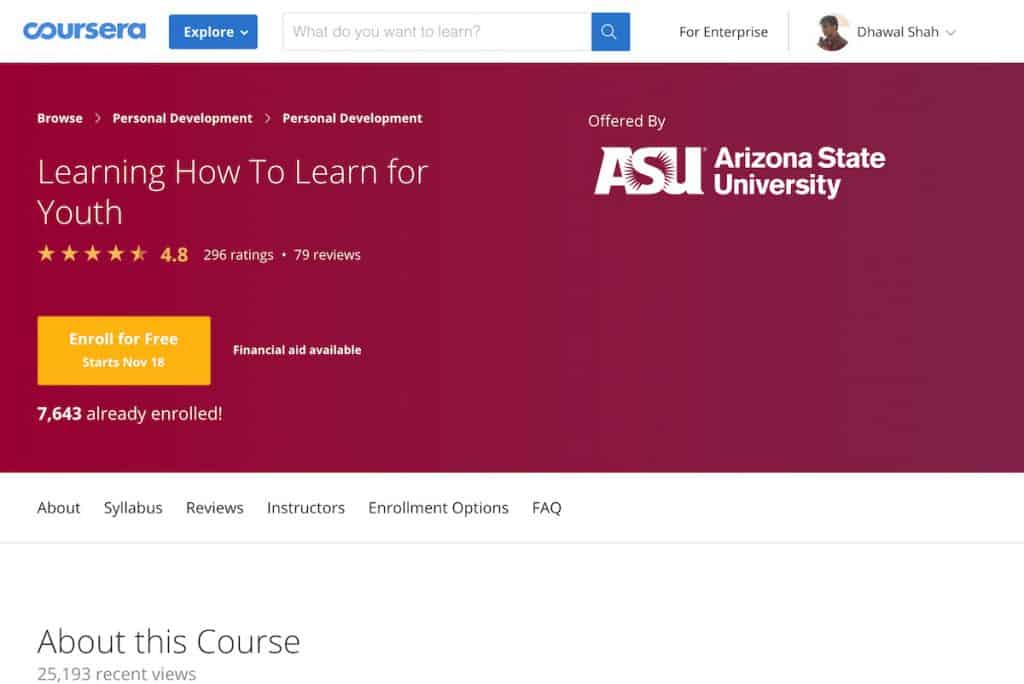
In an investigation by Class Central, we found that most Coursera courses show a start date that corresponds to the day you actually visit the course page.
2019: Unicorn Status and $185 million in Revenue
In 2019, Coursera achieved the coveted unicorn status: after a Series E funding round of $103M, the company reached a valuation of over $1B.
According to its IPO prospectus, the company earned $184.4 million in revenue and lost $46.8 million. Its Consumer business earned $121M, followed by $48.2 for Enterprise, and $15.1 million for Degrees.
May 2020: Coursera Guided Projects
Over the years, Coursera has been very picky regarding university partners. Universities that aren’t ranked highly have not been allowed to offer courses on Coursera.
In 2020, this has changed, to a certain extent.
In 2019, Coursera acquired Rhyme, an edtech startup based in Sofia, Bulgaria. The company’s software allows learners to use their browser to access virtual environments that can be preconfigured to include all the software and tools needed for a project. In addition, they can include embedded video instructions for students to follow along.
In 2020, Coursera started calling Rhyme courses “Guided Projects” and launching them under the Coursera Project Network. The most popular of these courses now have $77k enrollments.
At the time of writing, Coursera has over 2000 Guided Projects. You can see all the guided projects here: https://www.coursera.org/search?query=guided%20projects
2020: Coursera’s Pandemic Response
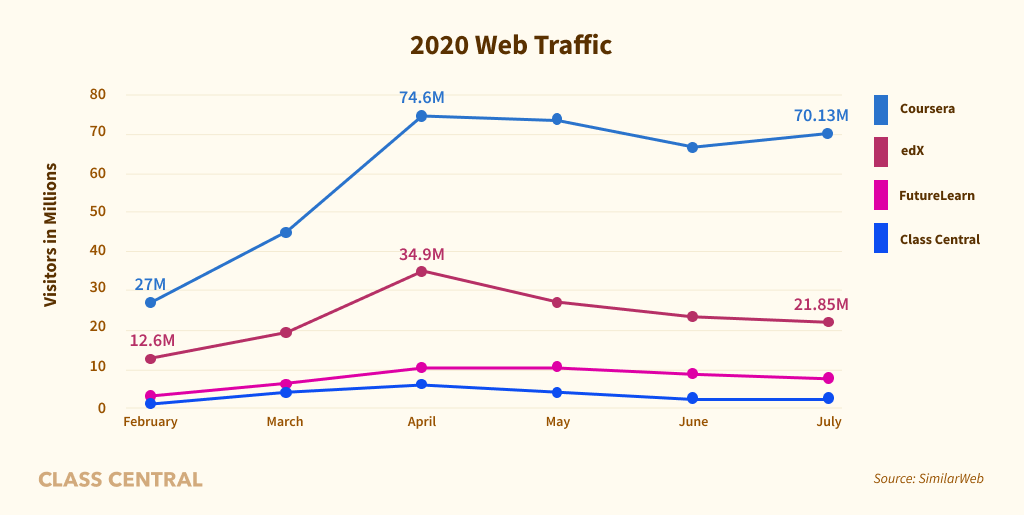
In my opinion, Coursera had the best response to the pandemic among all online education players.
Coursera’s pandemic response had four key components: free certificate courses, free COVID-19 courses, free Coursera for Campus, and free Coursera for Government. You can find more details about their pandemic response in Coursera’s 2020: Year in Review.
Coursera’s pandemic response and strong course catalog boosted its total number of learners from 45 million in 2019 to 76 million in 2020.
The pandemic response also helped them make inroads into two business lines: Coursera for Campus and Coursera for Government.
Oct 2020: Coursera Plus Monthly

A few months after announcing Coursera Plus, an annual $399 catalog subscription, Coursera started testing a monthly subscription for $59 per month.
Coursera Plus Monthly was eventually rolled out to all learners in June 2021.
2020: $293.5M Revenue, $281M Paid to Partners, 12K Degree Students
Of all the learners that ever registered on a MOOC platform, one third did so in 2020, making 2020 MOOCs’ most consequential year since the “Year of the MOOC”. This is why I called 2020 the Second Year of the MOOC.
Coursera attracted as many learners in 2020 alone as its closest competitor did in its entire existence. Among others, the company doubled its valuation, opened its platform to hundreds of professional creators, launched a new catalog subscription and experimented with another one.
All this has set up Coursera for a 2021 IPO. You can read about Coursera’s 2020 in Class Central’s extensive analysis of its IPO prospectus and Coursera’s 2020: Year in Review.
March 2021: Coursera Experiments with Letting Learners Create Courses
Last year, for the very first time, Coursera allowed individuals or “subject matter experts” to create courses. Previously, only Coursera’s partner universities and institutions could do so. Coursera called these new courses Guided Projects.
Now, Coursera is taking it one step further by letting their learners create courses. Last month, they put out a call inviting learners to apply to create Community Guided Projects.
But a few months later, as reported exclusively by Class Central, Coursera shut down Community Guided Projects.
March 2021: Coursera Goes Public
- Almost a decade after the seeds for what would become Coursera were planted, the company went public — a move accelerated by the pandemic, no doubt. The company keeps growing its revenue and expects to earn anywhere between $409 and $413 million in 2021. It did so by having a comprehensive product lineup, ranging from free offerings to product lines worth millions. I expanded on this multi-tiered business model in my analysis of how MOOC platforms make money, Six Tiers of MOOC Monetization. Now Coursera has A Product at Every Price.For more of Class Central‘s analysis of Coursera, check out out our previous Year in Review articles:

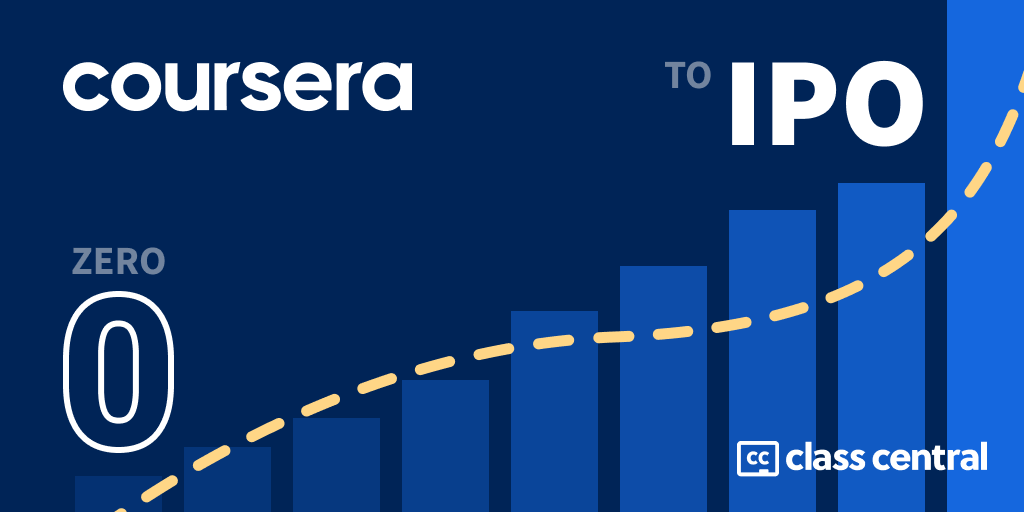
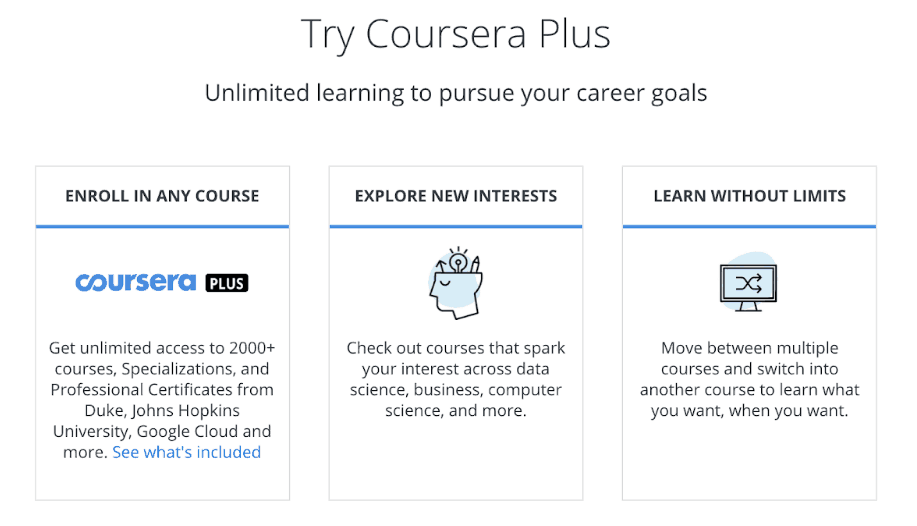
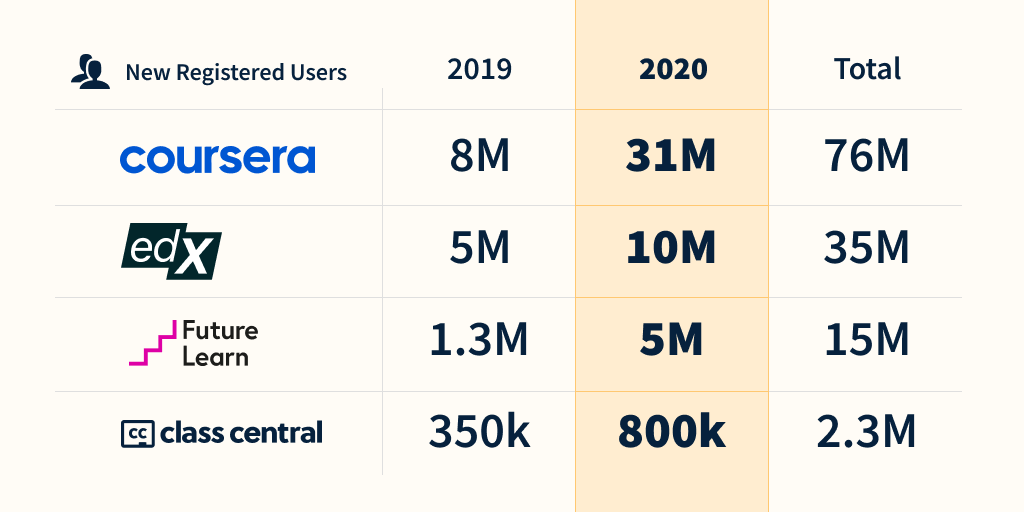
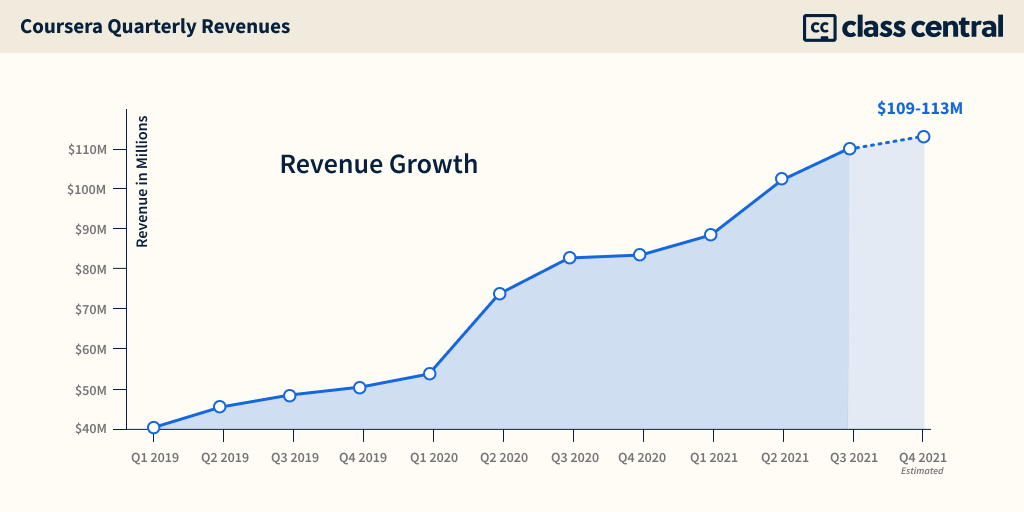






Trees Whitbeck
Very interesting article. I thought education was the primary goal, not commercialization. It is interesting to see how many different ways coursera looked at capitalizing on their investments. Their courses are really good and the learning interface works well, and you can still audit the courses at no cost and at least on the course I am taking now you can see the questions to all the tests which I greatly appreciate.
Thanks for class central and all the hard work you do!
gpcus
Practically Coursera is profiting on hopes of learners that have no alternatives and are gullible. In other environments, witch men selling cancer cures or con artist selling bridges, this will be prosecuted to the extent of law. But, as recognition that higher education is, largely, a bait an switch industry, useful to keep people in debt and reducing the unemployment rate as long as possible, is detrimental to our social organization, and given that suckers will be robbed anyway, enterprise like Coursera are left operating… more, they will be soon floated on the stock market to get even more gullible’s money. For what is my experience Andrew Ng Machine Learning was an excellent MOOC, but the quality and structure of Coursera course is now below terrible. And I doubt a Coursera certificate or masters has any real monetizable value and have not seen a demonstration of the opposite.
Kent Ekberg
Excellent article and analysis. The business model for Coursera and online courses has always been a big question mark for everyone, founders, investors, analysts. Nice to see after 6-7 years revenue streams have been developed after failures, shutdowns, tweaks, experiments, and successes. Out of chaos bold entrepreneurs find a way. Congrats on the Series E round.
Catherine
Very interesting article – thank you
Abba Suleiman
We need to understand that for Coursera to survive and continue to offer MOOCs, they need to make money- which is fine with me and agreeable by all students.
Nobody can continue to pour in millions of dollars just to sustain Coursera perpetually desiring free education for all unless they are Bill Gates with an endless stream of income.
Keeping this in mind, Coursera has to date done a hard job providing paid verifiable certificate courses at affordable prices BOTH to developed and underdeveloped countries. At least you can squeeze to pay for courses when employed if residing in an underdeveloped country (which I live in- Africa).
This benefits all parties- Course providers, the platform Coursera and the Students anywhere in the world. We shouldn’t forget the free Audit too.
Moreover, even if all this is free, Students use the courses to advance their careers whether with a certificate or not- changing careers, job promotion, being employable, gaining or enhancing skills to advance ventures, and for hobbies to unlock happy hormones. Why shouldn’t Coursera and the likes receive a little token for your own profit IF the education is cheap (paid certificate).
Eugene
Thank you very much for the article!
I still remember the old Coursera ,,, sad story, for me.
Andrea
Excellent summary; very useful for those who wish to start MOOCs, too.
Just what I was looking for, thank you 🙂
Margarret Fidow
I don’t ever believe that there is any ‘free lunch’ – even charities need income!
So long as there are options available that is all really very fair – we can still choose to do less assessments but most of the learning is still available. The high quality materials need to be paid for by someone somewhere.
I am a lifelong learner and I have been a distance learner of one sort or another since 1957. I have completed the available assessments or courses for more MOOCs than I have a note of – I guess it must be several hundred with Coursera first, then EDX and Futurelearn and a few others as well. I do not need a certificate for anything but if I was likely to benefit from that I would choose to pay if necessary.
I believe we are very fortunate indeed to have some ‘audit’ access and I hope that this will continue. Those of us who do this for our own enjoyment will often refer friends who can use certificates to help their CVs.
Dr. Vijayender Nalla
Very helpful to understand the business/revenue model journey of Coursera. Makes it very clear that marketplaces in education (coursera is at best a course/program marketplace) will struggle with their business model.
Education in general, digital education in particular are is a difficult business to develop when the delivery & learner/student engagement is outsourced. The lack of delivery and engagement as a core will leave scope for inconsistencies making it difficult for any particular business model to scale profitably.
Building a business/revenue model after acquiring a lot of free customers appears very challenging (definitely in education space)
Laurynas
I think it’s acceptable for these courses to be monetised. And the people who feel entitled to free courses, and are outraged that it got monetised in the first place, should remember that theres nothing stopping them to providing this service themsleves and realise why would anyone do something for free. This system can either get advertisement/ subscription/pay-per-course or something similar. But expecting it for free is unreasonable in my opinion. Most people who teach here are with university bacgrounds and they had to pay for their knowledge also.
Some people who are self taught they paid with their time.
Things like these can’t be free. Now there are plenty of free material on youtube, so if you want pure free information/knowledge there’s plenty of it on the internet.